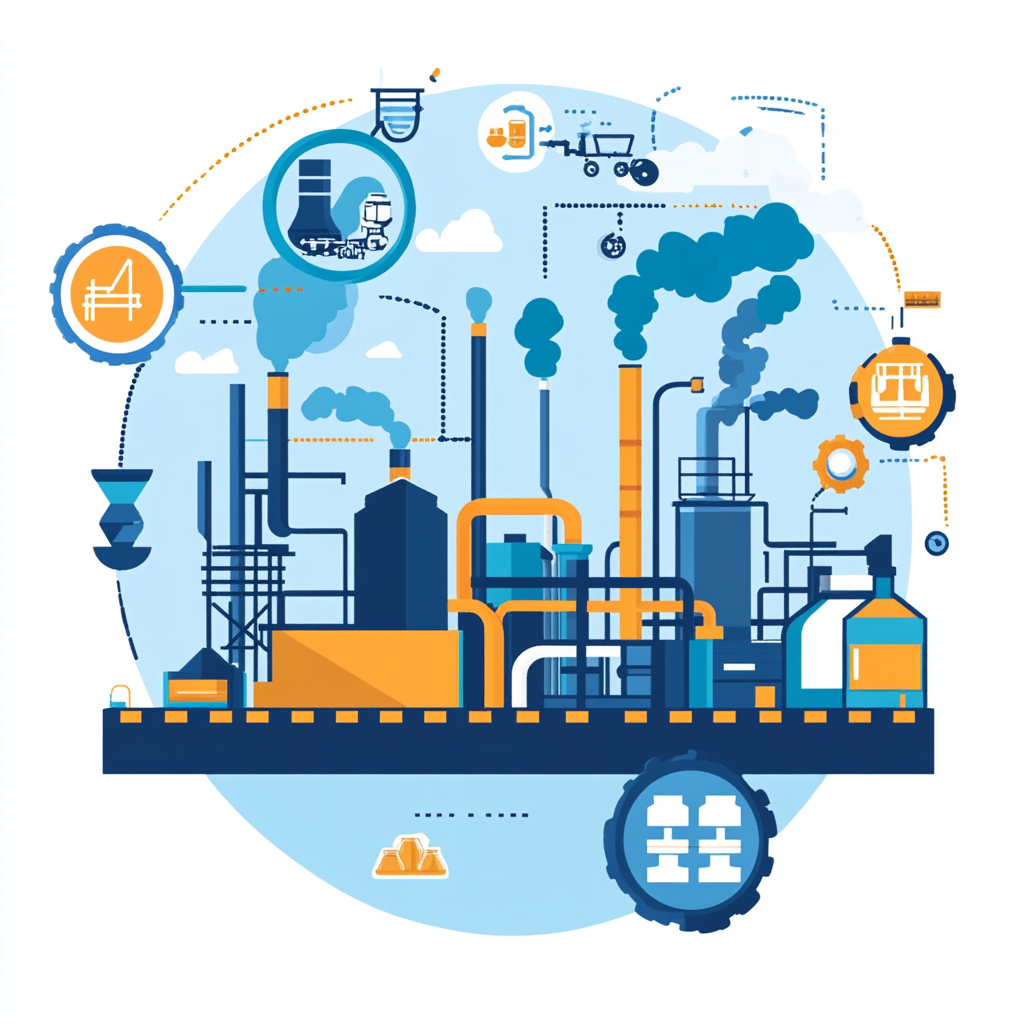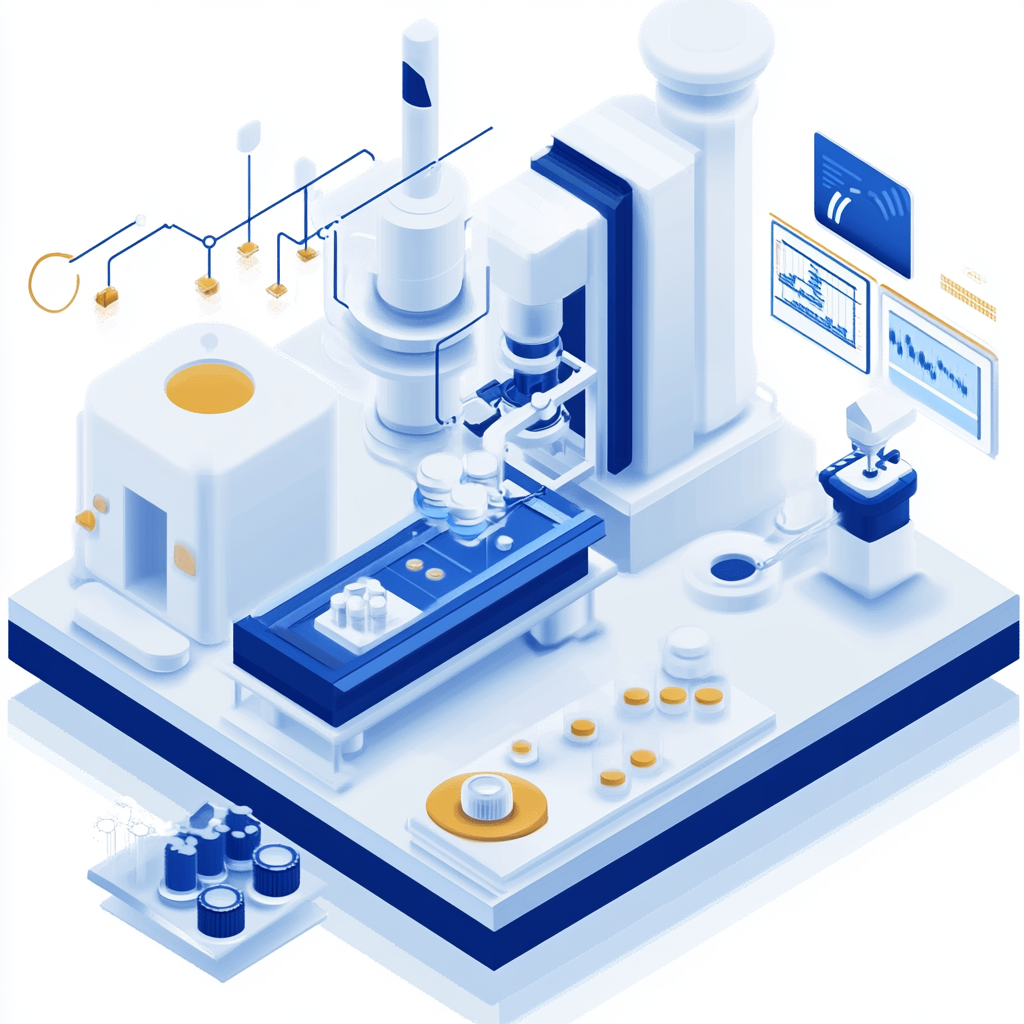Chemicals
Master Data Architecture in the Chemicals Sector: Core Features & Structural Integration
Building a Future-Ready Data Foundation for Compliance, Efficiency, and Innovation
In the chemicals industry, where precision, safety, and regulatory rigor are non-negotiable, a robust master data architecture is the backbone of operational success. At [Your Company Name], we design and implement scalable, secure, and industry-specific data architectures that unify fragmented systems, streamline compliance, and empower data-driven decision-making.
The Master Data Challenges Shaping Chemicals:
Diverse Systems: Disconnected ERP, PLM, lab systems, and IoT devices create silos.
Regulatory Complexity: Evolving mandates (REACH, GHS, TSCA) demand traceability and auditability.
Product Lifecycle Challenges: Managing formulas, SDS, hazardous classifications, and batch data across global teams.
Supply Chain Dynamics: Tracking materials, sustainability metrics, and supplier compliance.
A purpose-built master data architecture eliminates chaos by creating a unified, governed framework that aligns people, processes, and technology.
FORTE4’s SAP Master Data Governance (MDG) Solutions for Chemicals
Scalable Supply Chain Network
Centralized Data Hub with Industry-Specific Taxonomy
Standardized Data Models: Pre-configured templates for raw materials, intermediates, and finished products, mapped to CAS numbers, UN codes, and regulatory classifications.
Hierarchical Governance: Role-based access controls for R&D, production, compliance, and supply chain teams.
Global Compliance Frameworks: Built-in rules for REACH, CLP, OSHA, and region-specific regulations.
Regulatory Intelligence Engine
Automated Compliance Workflows: Real-time validation of SDS, hazard labels, and safety protocols.
Audit Trails: Immutable records of data changes, approvals, and regulatory submissions.
Dynamic Updates: Integrate regulatory changes (e.g., new PFAS restrictions) into workflows proactively.
Product Lifecycle Integration
End-to-End Traceability: Link R&D formulas, production batches, and customer shipments in a single lineage view.
Version Control: Manage iterations of product formulations, safety data, and packaging specifications.
IoT & Lab Data Integration: Ingest real-time sensor data from reactors, labs, or IoT-enabled storage systems.
API-First Modular Design
Interoperability: RESTful APIs for seamless integration with legacy systems, cloud platforms, and third-party tools.
Microservices Architecture: Deploy scalable modules (e.g., compliance, inventory, ESG reporting) without overhauling entire IT stacks.
Cloud-Native Flexibility: Hybrid or multi-cloud deployment (AWS, Azure, Google Cloud) with zero downtime.
Supplier & Material Master: Centralize supplier certifications, safety data, and sustainability scores (e.g., carbon footprint, recycled content).
Cross-System Harmonization: Sync data across ERP (SAP, Oracle), MES, and procurement platforms.
Risk Analytics: Flag disruptions (e.g., non-compliant raw materials, geopolitical risks) using AI-driven insights.
ERP & PLM Integration: Sync material masters, BOMs, and compliance data between SAP, Oracle, and product lifecycle tools.
Structural Integration: Bridging Silos Across the Enterprise
Lab-to-Market Alignment: Connect R&D systems (e.g., LabWare, ELN) with production and regulatory workflows.
Sustainability Reporting: Aggregate ESG data from suppliers, IoT sensors, and production systems for automated disclosures.
Customer & Sales Channels: Ensure accurate product specs, safety data, and certifications flow to CRM platforms (Salesforce, Dynamics 365).
Case Study: SAP Master Data Governance (MDG) Integration with Ariba for a Global Chemical Manufacturer
Client Profile
Industry: Chemicals & Specialty Materials
Size: $4B annual revenue, 12 production sites, 50+ global suppliers
Challenge: Decentralized vendor and material master data across 8 regional SAP ERP instances and Ariba Procurement, leading to procurement errors, delayed orders, and compliance risks.
Background & Challenges
The client’s procurement and supply chain operations relied on SAP ERP (ECC 6.0) and SAP Ariba for sourcing, supplier collaboration, and spend analytics. However, vendor and material master data was managed locally in regional ERP systems, with no centralized governance. Key issues included:
Data Inconsistencies:
Duplicate vendor entries (e.g., 15+ variations of “Dow Chemical” across systems).
Mismatched material classifications (e.g., conflicting UN codes for hazardous materials).
Compliance Gaps:
Supplier certifications (e.g., ISO, REACH) not consistently validated in Ariba.
Manual updates to safety data sheets (SDS) led to outdated data in procurement workflows.
Operational Friction:
3–5 day delays onboarding suppliers due to manual data reconciliation.
Ariba catalogs frequently contained obsolete materials, causing P2P errors.
The client sought a single source of truth for vendor and material data, with bidirectional synchronization between SAP Master Data Governance (MDG ) and Ariba.
Solution: SAP Master Data Governance (MDG ) 9.2 with Ariba Integration
Architecture Overview
Central Governance Hub:
SAP Master Data Governance (MDG ) 9.2 deployed as the master data authority for vendor (BP) and material domains.
Custom data models extended to include chemical-specific attributes:
CAS numbers, GHS hazard classifications, SDS expiration dates.
Supplier sustainability metrics (e.g., carbon footprint, recycled content).
Integration Framework:
SAP Master Data Governance (MDG ) → Ariba:
Master data published to Ariba via SAP Ariba Cloud Integration Gateway (CIG) using IDocs (MARA, LFA1).
Real-time sync for critical fields (e.g., material hazardous flags, vendor certifications).
Ariba → SAP Master Data Governance (MDG ):
Supplier self-service updates in Ariba Supplier Portal routed to SAP Master Data Governance (MDG )as change requests.
BRF+ rules validated Ariba-submitted data against compliance policies before approval.
Data Harmonization:
Central Data Services (CDS Views) aggregated material data from regional ERPs into SAP Master Data Governance (MDG ).
Ariba Network APIs enabled dynamic catalog updates based on SAP Master Data Governance (MDG )-governed material status (e.g., “discontinued” flagged in Ariba).
Key Technical Components
SAP Master Data Governance (MDG )Workflows:
Role-based approval chains for vendor/material creation (e.g., EHS team validated hazard flags).
Automated enrichment of material masters with SDS data from SAP EHS Module.
Ariba Integration:
CI-DS (Customer Integration Data Services) for batch alignment of material pricing and availability.
Custom Ariba Punchout Catalogs mapped to SAP Master Data Governance (MDG )material hierarchies to enforce standardized descriptions.
Middleware:
SAP Process Integration (PI/PO) for orchestrating IDoc and SOAP-based flows between SAP Master Data Governance (MDG )and Ariba CIG.
Data Quality Microservices: Python-based scripts cleansed legacy supplier addresses and material units of measure (UoM) pre-migration.
Implementation Challenges & Resolutions
Data Latency in Ariba:
Initial batch-based IDoc sync caused 4–6 hour delays in catalog updates.
Resolution: Implemented event-driven triggers using PI/PO AAE (Advanced Adapter Engine) for near-real-time updates.
Supplier Self-Service Complexity:
Suppliers struggled with Ariba’s UI for updating compliance documents.
Resolution: Built a simplified web form (SAP Fiori) in Ariba Supplier Portal, prefilled with SAP Master Data Governance (MDG )data.
Material Classification Conflicts:
Regional ERPs used incompatible UoM (e.g., “gallons” vs. “liters”) for raw materials.
Resolution: Deployed SAP Information Steward to standardize UoM, with fallback rules in SAP Master Data Governance (MDG ).
Outcomes
Data Quality:
50% reduction in vendor duplicates; 90% of materials aligned to ISO 8000 standards.
Process Efficiency:
Supplier onboarding accelerated from 5 days to 8 hours via automated SAP Master Data Governance (MDG )-Ariba workflows.
Ariba catalog errors reduced by 70% through real-time material status sync.
Compliance:
100% of suppliers validated against REACH/CLP regulations during SAP Master Data Governance (MDG )approval.
Automated SDS expiry alerts in Ariba cut compliance audit prep time by 40%.
Technical Lessons Learned
Master Data Decay: Scheduled quarterly SAP Master Data Governance (MDG )-Ariba reconciliation jobs (via SAP BODS) to address drift.
Governance Scope: Initially excluded “service” vendors from SAP Master Data Governance (MDG ), causing Ariba contract mismatches. Later expanded SAP Master Data Governance (MDG ) data models to include service categories.
Performance: Indexing SAP Master Data Governance (MDG )Material Search Model (MSM) on CAS numbers improved Ariba integration throughput by 30%.
Conclusion
This integration demonstrated that SAP MDG, when architecturally aligned with Ariba’s procurement workflows, can resolve critical data fragmentation issues in asset-intensive industries like chemicals. The technical focus on event-driven integration, domain-specific data models, and automated compliance checks provided a scalable template for future expansions (e.g., integrating SAP S/4HANA and Ariba Analytics).














